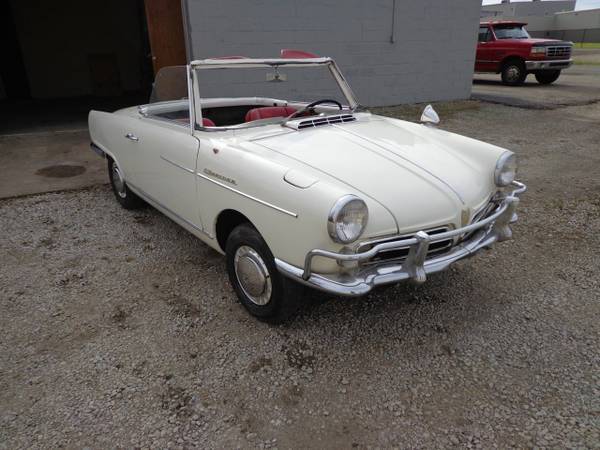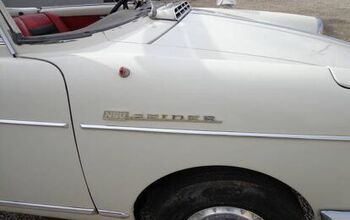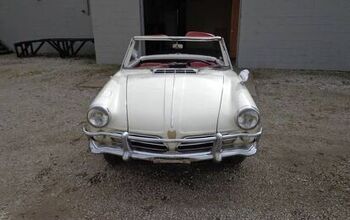Rare Rides: NSU's New Way to Wankel - the Spider From 1965 (Part I)

Back in the 1960s, a little German car company decided to spend a lot of money to create a new-to-them type of engine. The car company in question was NSU, and the engine that cost them so much money was a Wankel.
In a first-ever for the Rare Rides series, this will be a four-part entry. Come along as we explore the NSU brand and the Spider; a tiny roadster which ended up almost entirely responsible for the demise of its parent company.
We’ve skirted around the NSU brand previously, when Rare Rides featured a DKW 3=6 of interesting origins. You can read those history lessons here and here. The DKW articles did not mention NSU directly, as the brand was a later addition to the Auto Union group. While DKW purchased the majority of Audi in 1928, merging DKW, Horch, Audi, and Wanderer to form Auto Union in 1932, NSU would remain an independent entity up through 1969. But let’s not get ahead of ourselves; we first need to talk about knitting.
NSU originated in 1873 as a manufacturer of knitting machines. The company was quite good at making the machines, apparently, growing rapidly after relocating from its initial factory in 1880. Not content with machines for knitting, the company expanded its scope into bicycle manufacturing.
The production of bicycles proved more lucrative and interesting than the knitting machine business, and by 1892 the company only produced two-wheeled transportation devices. A rebranding happened around this time, as “Werkstätte zur Herstellung von Strickmaschinen” didn’t fit well on the frame of a bicycle. The company decided NSU was more suitable, but still was not content with its product offering.
Expanding offerings into bicycles with engines, the company produced its first motorcycle in 1901. In 1905, NSU followed this effort with the first NSU automobiles. The initial automobile offering was the three-wheeled Sulmobil, designed by NSU and powered by a one-cylinder engine making 3.5 horsepower. Also on offer were two license-produced vehicles called the NSU-Pipe 34 and 50, designated by their respective metric horsepower measurements. These vehicles had much larger four-cylinder engines. However, NSU had no part in their design.
The aforementioned Sulmobile with its three-wheel setup was a sort of halfway point between motorcycle and car. Expensive for the time, the NSUs were also compromised. Maximum passenger and cargo load for the Sulmobile was between 330 and 440 pounds. But NSU was happy it had a “car” on the road, and was pushing forward with development and technology.
But development and technology didn’t ensure the company was actually making any money. Stay tuned for Part II, when NSU gets into some hot water.
[Images: seller]

Interested in lots of cars and their various historical contexts. Started writing articles for TTAC in late 2016, when my first posts were QOTDs. From there I started a few new series like Rare Rides, Buy/Drive/Burn, Abandoned History, and most recently Rare Rides Icons. Operating from a home base in Cincinnati, Ohio, a relative auto journalist dead zone. Many of my articles are prompted by something I'll see on social media that sparks my interest and causes me to research. Finding articles and information from the early days of the internet and beyond that covers the little details lost to time: trim packages, color and wheel choices, interior fabrics. Beyond those, I'm fascinated by automotive industry experiments, both failures and successes. Lately I've taken an interest in AI, and generating "what if" type images for car models long dead. Reincarnating a modern Toyota Paseo, Lincoln Mark IX, or Isuzu Trooper through a text prompt is fun. Fun to post them on Twitter too, and watch people overreact. To that end, the social media I use most is Twitter, @CoreyLewis86. I also contribute pieces for Forbes Wheels and Forbes Home.
More by Corey Lewis
Latest Car Reviews
Read moreLatest Product Reviews
Read moreRecent Comments
- Redapple2 4 Keys to a Safe, Modern, Prosperous Society1 Cheap Energy2 Meritocracy. The best person gets the job. Regardless.3 Free Speech. Fair and strong press.4 Law and Order. Do a crime. Get punished.One large group is damaging the above 4. The other party holds them as key. You are Iran or Zimbabwe without them.
- Alan Where's Earnest? TX? NM? AR? Must be a new Tesla plant the Earnest plant.
- Alan Change will occur and a sloppy transition to a more environmentally friendly society will occur. There will be plenty of screaming and kicking in the process.I don't know why certain individuals keep on touting that what is put forward will occur. It's all talk and BS, but the transition will occur eventually.This conversation is no different to union demands, does the union always get what they want, or a portion of their demands? Green ideas will be put forward to discuss and debate and an outcome will be had.Hydrogen is the only logical form of renewable energy to power transport in the future. Why? Like oil the materials to manufacture batteries is limited.
- Alan As the established auto manufacturers become better at producing EVs I think Tesla will lay off more workers.In 2019 Tesla held 81% of the US EV market. 2023 it has dwindled to 54% of the US market. If this trend continues Tesla will definitely downsize more.There is one thing that the established auto manufacturers do better than Tesla. That is generate new models. Tesla seems unable to refresh its lineup quick enough against competition. Sort of like why did Sears go broke? Sears was the mail order king, one would think it would of been easier to transition to online sales. Sears couldn't adapt to on line shopping competitively, so Amazon killed it.
- Alan I wonder if China has Great Wall condos?


































Comments
Join the conversation
Pieces Of $#!+
A friend of a friend had this Spider in the Midwest in the late 1960s. She was a young college instructor. She offered a ride to me and we drove it from the Midwest to the east coast. A ride was a ride, but it seemed pretty small to me. The car used a lot of oil, which she carried with the car. I recall stopping for gas somewhere along the way, and filling up for about $3.00. The car needed a quart of oil, and I remember the filling station owner complaining about hauling away the empty can when we didn't buy the oil from him!